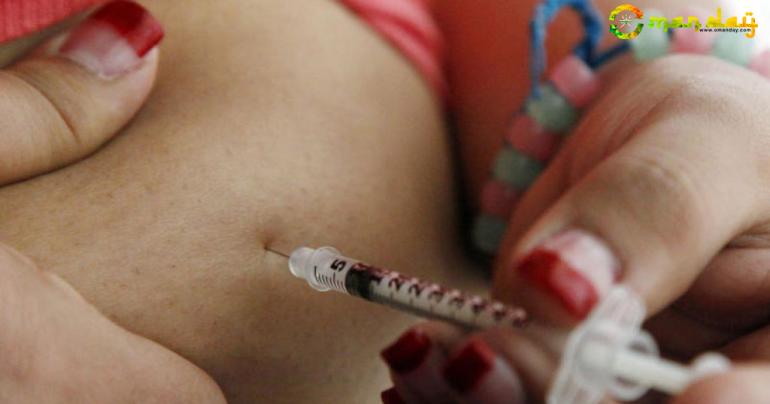Is your child at risk of diabetes?
SINGAPORE — In 2010, a national health survey concluded that almost one-third of Singaporeans are at a high risk of having diabetes in their lifetime. Then, in 2014, a research paper by a group of National University of Singapore academics revealed that, by 2050, Singaporeans potentially have a one-in-two chance of developing Type 2 diabetes.
The thing is, it’s not just adults who need to be worried: Rising obesity in children means that this younger age group should also be aware of their chances of getting this chronic disease.
Dr Christelle Tan, a specialist in paediatrics at Raffles Specialists, Raffles Holland V, shared how national health statistics in 2010 revealed that the prevalence of overweight or severely overweight primary school students is at 12 per cent, and that of secondary school students is 10.5 per cent.
Additionally, a recent Health Promotion Board study on obesity declared that 70 per cent of children who were overweight at age seven stayed overweight as adults. It also found that 10 per cent of five-year-olds are overweight.
Carrying excess weight comes with a whole set of health problems, with one of the biggest being the risk of diabetes.
“Type 1 diabetes used to be known as childhood diabetes as many patients are diagnosed from a young age,” said Dr Tan. “The incidence, however, remains stably low in our population (2.46 per 100,000 for children one to 12 years). Type 2 diabetes used to be more common in adulthood but is increasingly being diagnosed in children due to the increased incidence of obesity.”
Dr Tan added that while Type 1 diabetes is generally associated with a genetic predisposition, Type 2 diabetes tends to be linked to more modifiable lifestyle factors such as obesity, having a sedentary lifestyle and having unhealthy dietary habits.
Ethnicity also seems to play a role in Type 2 diabetes: In Singapore, studies show that the Indian and Malay ethnic groups tend to be more at risk.
While the disease can be managed, diabetes could affect a child’s life beyond just taking medication and eating the “right” foods.
NOT JUST ABOUT SUGAR
“Having diabetes disrupts children’s lives and imposes on them lifestyle changes they are usually not mentally prepared to make or emotionally ready to accept,” explained Associate Professor Fabian Yap, head and senior consultant, endocrinology service, department of paediatrics at KK Women’s and Children’s Hospital.
“A diagnosis of Type 2 diabetes at a young age is also at odds with the aura of bodily invincibility children feel they have a right to have,” he added. “Many children feel simply confused and conflicted, leading to poor glucose control. Those with poorer blood glucose control are at greater risk of developing complications.”
Prof Yap also shared that since 1997 when the hospital introduced its paediatric specialties, it has treated more than 1,000 children with diabetes, majority of whom were diagnosed with Type 1 diabetes.
But KKH statistics “do not reflect any increase in the number of children newly diagnosed with Type 2 diabetes in recent years”.
To avoid issues like obesity and diabetes, experts say parents should learn how to change their kids’ diet and lifestyle. And this goes beyond cutting out sugar.
“Too much sugar does not mean your child will get diabetes, it’s a more indirect relationship,” explained Jaclyn Reutens, dietician, Aptima Nutrition & Sports Consultants.
“Excess sugar intake increases the risk of accumulating excess fat which will increase the risk of diabetes. This theory is similar for adults too.”
Ms Reutens pointed out the difference between white sugar (sucrose) that we add to cakes and desserts, compared with other types of sugar — lactose found in diary, and fructose found in fruit.
“Lactose and fructose are not considered bad because they are found in foods that are highly nutritious and should be incorporated in your child’s daily diet,” she said. “Sucrose, on the other hand, provides energy with little nutritional value.”
She added that while children need loads of energy to sustain their high-energy expenditure, the foods they eat regularly “should also contain other vitamins, minerals, dietary fibre, protein and good fats”.
ADOPTING A HEALTHY LIFESTYLE
To avoid obesity in kids, Ms Reutens suggested parents include wholegrain as often as possible, as these help to control appetite and blood sugar levels.
Limit sweetened beverages such as cordials, canned drinks and fruit juices, and encourage water as the beverage of choice instead.
And, while children should be allowed to enjoy sweets and cakes, they need to know these are not everyday foods. Don’t view them as “reward foods” either as that will send the wrong message to them.
Foods that contain high amounts of fat — especially saturated fat — such as pastries, ice-cream and deep-fried foods should be limited to no more than twice a week.
Parents should also offer their kids healthier snacks such as wholemeal biscuits, fruit, yoghurt, milk, nuts, lower-sugared cereals and vegetable sticks.
“A healthy diet should not have any food restrictions, rather a good sense of portion control,” Ms Reutens advised.
In addition to following a sensible food plan, parents should also encourage physical activity and exercise, urged Dr Tan. For example, children aged seven to 18 should have at least 60 minutes of moderate-to-vigorous-intensity physical activity, at least three times a week.
“Cut down on sedentary activities like watching TV or using the iPad. Screen time should be limited to not more than two hours in a day or 14 hours in a week,” she added.
Promoting a healthier lifestyle should be at the core of what parents should do, so as to stave off obesity and diabetes, said Associate Professor Yap.
“Given that obesity and diabetes are related to genetic predisposition, behavioural patterns and environmental factors, it follows that Type 2 diabetes can be prevented by following a healthy lifestyle, adopting measures such as careful and responsible meal plans and physical activity,” he said.
Share This Post






